Why Do Pillows Turn Yellow? 5 Reasons They Stain
Author: Anne Cowart | Editor: Omar Alonso
Review & Research: Jen Worst & Chris Miller

A clean pillow is essential to good sleep, so you must ensure it stays clean and fresh. Not keeping pillows clean can negatively impact your rest and health in several ways. And they can become unsightly, too, making you not want to rest your head on them. Why do pillows turn yellow?
Yellow-stained pillows can quickly happen over time due to factors such as body oils, drool, and even beauty products. Once these have soaked into the pillow, they will slowly become discolored and turn into stains.
These stains can also occur if you’re not replacing your pillows consistently. Unfortunately, it’s very easy to go without getting new pillows or even knowing when to wash them properly.
Why Do Pillows Turn Yellow?
Luckily, you can prevent these yucky stains while maintaining a good quality of sleep long-term. Here are the five main reasons that a pillow starts yellowing and creates the conditions to collect skin cells, allergens, dust mites, and other contributors to this unsightly color.
Wet Hair
It may seem harmless to go to bed with wet hair. However, it’s one easy way to ruin your pillows. Water from your hair will become trapped in your pillow, leading to discoloration and stains.
It’s best to dry your hair before lying on your pillow. Or, if you go to bed with wet hair, ensure your pillow is completely dry before sleeping.
Body Oils
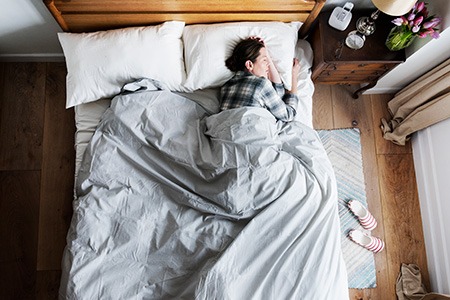
Unfortunately, body oils are consistently transferred onto our bedding, especially onto our pillows. Our sebaceous glands are responsible for this oiliness which can be found on our skin and in our hair.
If these glands become overactive, this will cause excess sebum to absorb into your pillow. Eventually, this will turn yellow, which could lead to severe acne if not washed.
Sweat
We all sweat in our sleep to a certain degree. However, it’s important to note that excessive sweating could be the cause of an underlying health problem. Furthermore, sweating at night creates moisture in your pillow and creates stains. A great way to combat this is by sleeping in cool temperatures.
Also, making sure you’re not sleeping with a lot of blankets or overly hot pajamas can ensure you avoid sweating a lot while you sleep. While you're at it, wash your bedding sheets and covers and learn how to get rid of static on blankets as well.
Drool
Drooling while asleep is something that is also very common. Often, drooling happens simply because we are asleep. While sleeping, our muscles are relaxed, including the muscles in our mouths and throat. This, in turn, relaxes our reflexes and disrupts our ability to swallow.
Unfortunately, drooling, especially in excess, could be caused by underlying health conditions or oral problems. So, always seek a medical opinion if you’re constantly drooling.
However, if you find yourself occasionally drooling, sleeping with your head propped on your pillow is a great way to avoid this. Another great solution is to wear a dental mouthguard while you sleep. Both of these methods can help alleviate drool on your pillow and prevent yellow stains.
Beauty Products
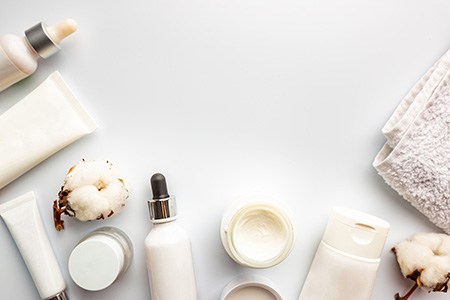
Beauty products are something that many of us use in our night routines. But unfortunately, while they’re great for the skin, they aren’t suitable for pillows. These products often contain different types of moisturizers and oils. These ingredients seep into your pillow and eventually become stubborn stains and discoloration.
We often put these products on and head to sleep after applying them before bed. However, using them a few hours before going to sleep may be best. This will allow the product plenty of time to dry properly and decrease the risk of it transferring onto your pillow.
How to Prevent Yellow Pillow Stains
You don't even need to ask why do pillows turn yellow if you prevent the cause first. It’s very easy to prevent your pillows from developing yellow stains. It’s simply a matter of keeping up an effective cleanliness routine.
Wash Them Regularly
Ideally, pillows should be washed once every three months. Or at least once every six months. Washing your pillows regularly will help keep them fresh and keep stains at bay.
Use a Headdress
If you constantly go to bed with products on your hair, using a hairdresser could be a good solution to avoid staining the pillow. Like already mentioned, self-care products are usually composed of oils and other persistent ingredients that will transfer to your pillow and turn them yellow.
Keep a Pillowcase On
A pillowcase is the easiest way to prevent stains and wear and tear on your pillows. Changing your pillowcases at least once a week is recommended. Keeping them switched regularly can further prevent acne and other dermatological issues.
Try a Pillow Protector
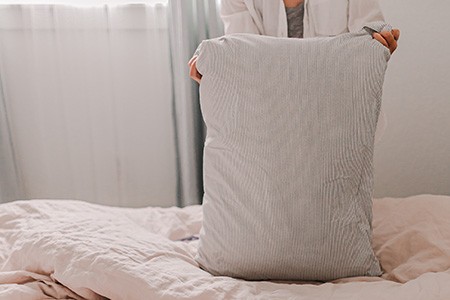
Pillow protectors come in handy when trying to ensure your pillows last a long time. Not only can they keep away yellow stains & discoloration, but they can also keep out dust and allergens.
Pillow protectors also help keep your pillow in good condition. So even if your pillow has seen lots of stains, place your pillow case and protector on upon washing. It will provide an added layer of security while keeping out any form of dirt.
Is it Safe to Sleep on Yellow-Stained Pillows?
While sleeping on yellow-stained pillows is not particularly dangerous, it’s not exactly safe either. A myriad of factors, including dust mites, dead skin, and allergens, usually causes a yellow stain on a pillow.
So, if you notice your pillows have yellow stains, it’s best to wash them as soon as possible. This can prevent other stains, such as brown stains, from developing. If it reaches that point, it’s time to throw away the pillow.
How Often Should You Replace Your Pillow?
Replacing your pillows every 1 to 2 years is recommended. Replacing them will help prevent potential neck, skin, and general health problems.
Aside from yellow stains on a pillow, a sore neck and acne are also clues that it may be time for a new pillow. Furthermore, brown stains, moldy smells, or frequent sneezing when lying down are signs it’s time to replace your pillows.
Are Yellow-Stained Pillows Normal?
Yes, it’s normal for pillows to turn yellow. But why do pillows turn yellow? Unfortunately, over time your pillow will absorb dander, dust, oils, skin, allergens, etc. These all will cause it to become severely stained or, in the worst cases, become moldy. In order to help prevent staining from happening too soon, you can wash them every 3 to 6 months.
Steps to Properly Wash Yellow Stained Pillows
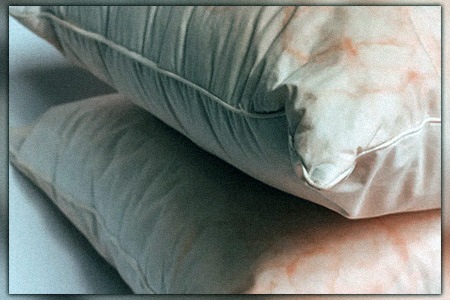
Typically yellow stains can be washed out from a pillow. However, before tossing it into the washer, it’s essential you first look at the tag for washing instructions.
If the instructions say it’s machine washable, it may help to apply a stain-removal spray first. Let it sit for a few hours, then place the pillow into the washer.
It may also help to add a little baking soda to promote extra cleanliness. You must ensure you wash pillows on the gentle cycle only. Also, ensure you wash it at the instructed water temperature.
If you want to get your pillows clean and white, you can mix bleach and borax (120ml). Another method to get pillows bright white is by mixing vinegar and detergent.
Once they are done washing, ensure they are safe to place into the dryer. If so, set the dryer on low heat. Adding a couple of tennis balls is an excellent way to get them nice and fluffy while drying.
On a side note, if your pillows are made from memory foam, it’s best to spot-treat the stains. To spot treat memory foam pillow, you will need:
- A damp cloth
- A stain remover
- Mild laundry detergent
Don’t put memory foam into the dyer. Instead, set it out to air dry. Be careful how you dry each pillow type. Feather or down pillows will need a different treatment than foam or polyfill bed pillows, etc. Different types of pillows require different washing and drying methods.
When Should You Throw Away Yellow Pillows?
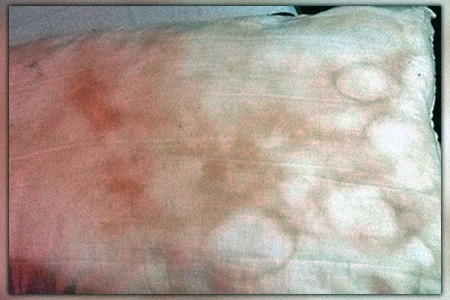
If your pillows are stained yellow and it won't come out or you’ve had them for two years or longer, it’s a good time to toss them out. This doesn't apply to pillows on your couch (unless you sleep on them), though you should consider deodorizing your couch every once in a while.
Prioritize Your Pillows
Everyday life can be very hectic, but you must prioritize cleaning in general, especially regarding your pillows. You don’t want to sacrifice decent sleep and good health from accidental misprioritization.
Developing a consistent routine is a great way to ensure you don’t neglect cleaning your pillows. Then, you only need to choose one day a week to change your pillowcase or protector.
You should ensure you have backup pillowcases. This can help you always stay prepared to change the cases as soon as needed.
So, Why Do Pillows Turn Yellow?
Why does my pillow turn yellow? Yellow-stained pillows are common due to factors such as body oils, sweat, drool, and beauty products. These stains can negatively impact your rest and health in various ways, including the growth of dust mites, allergens, and mold.
It's important to regularly wash your pillows, replace them every 1-2 years, and use protective covers to maintain their cleanliness and longevity.
Prioritizing the cleanliness of your pillows is crucial for a good night's sleep and overall well-being. By taking preventative measures and following proper washing techniques, you can ensure a clean and healthy sleeping environment. With enough prevention and washing, you'll never have to ask why do pillows turn yellow again.




